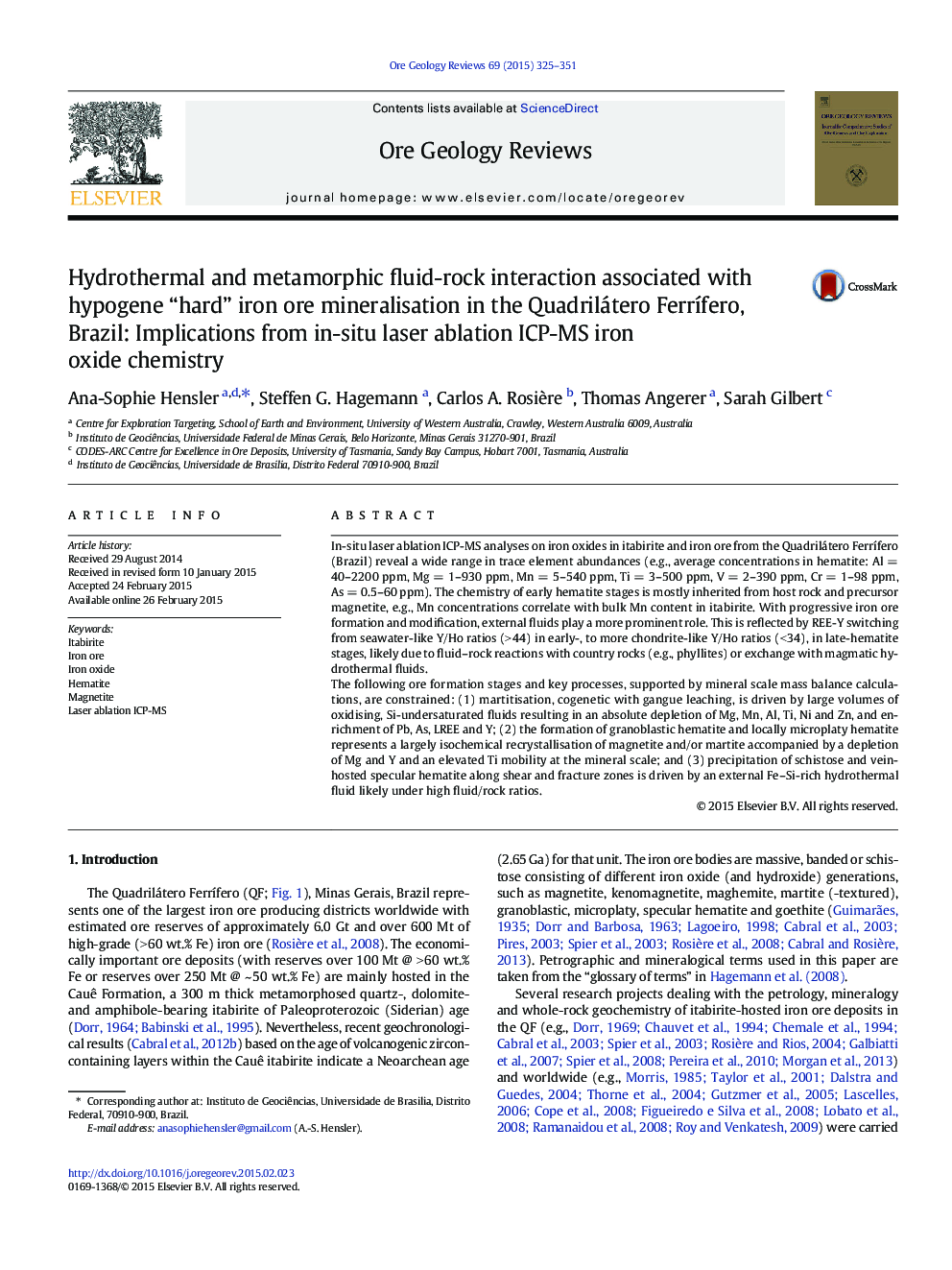| کد مقاله | کد نشریه | سال انتشار | مقاله انگلیسی | نسخه تمام متن |
|---|---|---|---|---|
| 4697323 | 1637235 | 2015 | 27 صفحه PDF | دانلود رایگان |

• This is a regional study on iron ore genesis in the Quadrilátero Ferrífero, Brazil.
• We perform in-situ LA-ICP-MS analyses on various ore-forming iron oxides.
• Element inheritance of host rock in early-stage martite.
• With progressive iron ore formation, the influence of external fluids increases.
• Model for the formation of iron ore including critical chemical changes is proposed.
In-situ laser ablation ICP-MS analyses on iron oxides in itabirite and iron ore from the Quadrilátero Ferrífero (Brazil) reveal a wide range in trace element abundances (e.g., average concentrations in hematite: Al = 40–2200 ppm, Mg = 1–930 ppm, Mn = 5–540 ppm, Ti = 3–500 ppm, V = 2–390 ppm, Cr = 1–98 ppm, As = 0.5–60 ppm). The chemistry of early hematite stages is mostly inherited from host rock and precursor magnetite, e.g., Mn concentrations correlate with bulk Mn content in itabirite. With progressive iron ore formation and modification, external fluids play a more prominent role. This is reflected by REE-Y switching from seawater-like Y/Ho ratios (> 44) in early-, to more chondrite-like Y/Ho ratios (< 34), in late-hematite stages, likely due to fluid–rock reactions with country rocks (e.g., phyllites) or exchange with magmatic hydrothermal fluids.The following ore formation stages and key processes, supported by mineral scale mass balance calculations, are constrained: (1) martitisation, cogenetic with gangue leaching, is driven by large volumes of oxidising, Si-undersaturated fluids resulting in an absolute depletion of Mg, Mn, Al, Ti, Ni and Zn, and enrichment of Pb, As, LREE and Y; (2) the formation of granoblastic hematite and locally microplaty hematite represents a largely isochemical recrystallisation of magnetite and/or martite accompanied by a depletion of Mg and Y and an elevated Ti mobility at the mineral scale; and (3) precipitation of schistose and vein-hosted specular hematite along shear and fracture zones is driven by an external Fe–Si-rich hydrothermal fluid likely under high fluid/rock ratios.
Journal: Ore Geology Reviews - Volume 69, September 2015, Pages 325–351